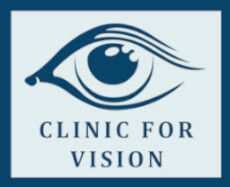
.
Q: Is too much computer or hand-held device use bad for my child’s eyes?
A: The last few years have seen a radical shift in how our children use their vision. More and more time is spent looking at an electronic screen; TV, computer, cell phone, game device, and so on. Vision scientists have long pointed out that excessive near point tasks can lead to increased myopia (nearsightedness) in children, eyestrain, and headaches. Combined with the potentially damaging effect of the blue light these screens emit, you have the possibility of a dangerous situation. We recommend a common-sense approach. First, limit the time your child has to electronic media. Psychologists, educators, and doctors all agree: too much is not good. Second, practice the 20/20/20 rule. For every twenty minutes of near point tasks, take twenty seconds and look at something twenty feet or more away. In short, take frequent rest breaks. Third, use lenses that are designed for your particular activity. Having the correct eyeglass or contact lens prescription is always the place to start. There are lenses and coatings that not only provide the proper focus, but also block unwanted glare and limit the amount of damaging blue light.
Q: What is Amblyopia?
A: Sometimes called Lazy eye, it is the underdevelopment of central vision in one or sometimes both eyes; it also prevents both eyes from working together.
Q: How will I know if my child's amblyopia is getting better? Is it too late to help if the problem is detected after age 6?
A: Lazy eye will not go away on its own. We have what is called electrodiagnostic testing which can determine the effectiveness of amblyopia treatment without relying on the response of the child to "tell" us how well they are seeing. Oftentimes, parents worry that the eye exam is not accurate if their child is not old enough to read the chart or is uncooperative due to anxiety surrounding an eye exam. This test is non-invasive and fast (30 minutes) and can be done right here in our office for patients of all ages, starting in infancy. We can track over time how the therapy is working and the prognosis of their vision.
Q: Is Amblyopia permanent?
A: Treatment for amblyopia may include a combination of prescription lenses and prisms, or vision therapy. Sometimes surgery is indicated for muscle weakness but it is not as common.Early diagnosis increases the chance for a complete recovery. This is one reason the American Optometric Association recommends that children have a comprehensive optometric examination by 6 months of age.
Q: When does Amblyopia start?
A: It is usually present at birth but can worsen over time. Amblyopia is usually detected at a baby’s first eye exam, called infantsee. However, when a child enters kindergarten eye problems can become more bothersome due to high demands of reading and schoolwork.
Q: How do I get an Amblyopia exam? I don’t have vision insurance.
A: We offer exams to ALL patients, including the non insured. We can make it affordable for everyone to get the proper care.

